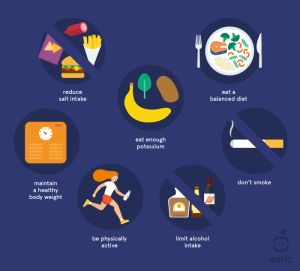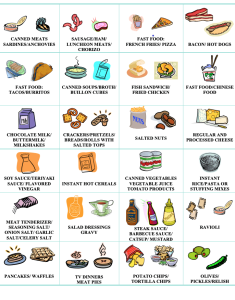Salt is essential for the body, and the Food & Drug Administration says it helps muscles and nerves function.
However, studies show that high-sodium diets put a person at risk for increased blood pressure.
High blood pressure reduces the flow of blood and oxygen to the heart, which ups the risk for heart disease, according to the CDC. Salt is also known as sodium.
Cutting sodium intake can help reduce the risk of hypertension, according to Dr. John Higgins, a cardiologist.
Relationship between salt and blood pressure

Dr. Higgins notes that high salt intake increases blood pressure for several reasons. First, salt increases fluid retention and, consequently, blood volume. “This means more fluid for the heart to pump, more stress on the heart and more fluid in the blood vessels that puts pressure on the walls,” Dr. Higgins explains.
Salt intake can also lead to damage to the blood vessel walls, inflammation and kidney damage. “This is because excess salt intake can increase your blood pressure thanks to a disruption of balance within the kidneys,” says Dr. Robert Segal, founder of Manhattan Cardiology.
The kidneys typically filter fluids. However, salt-induced fluid retention may make that more challenging. Then, the heart has to work harder, and blood pressure increases. And it becomes a vicious cycle between kidneys and high blood pressure.
The American Heart Association also notes that hypertension is a risk factor for kidney damage and disease because damaged arteries cannot bring enough blood to kidney tissue,
How much salt per day?
The American Heart Association guidelines suggest no more than 2,300 milligrams daily, which is about one teaspoon. Ideally, adults—particularly those with high blood pressure—should limit sodium consumption to less than 1,500 milligrams per day, which is about a quarter of teaspoon.
Foods high in sodium

“Processed and packaged foods are generally higher in salt intake,” says Dr. Segal. But it’s not just classic processed or packaged foods like chips and pretzels.
Dr. Higgins notes that foods with high salt content include: bread and rolls, pizza, sandwiches (especially store prepared), cold cuts and cured meats, burritos and tacos, ketchup, canned soups, bacon, etc.
Nutritionists say some foods clearly have a ton of salt—you can taste it. But salt can be sneaky since it’s even used as a preservative in some foods. So, read the label.
Other simple ways to limit salt intake
The following are straightforward ways to shake your salt habit, including:
- Don’t add salt to your plate or when cooking.
- Avoid salty flavorings, such as barbecue or soy sauce.
- Try other herbs and spices that don’t have salts, like chili, pepper, ginger, lime and lemo.
- Use a salt substitute. Morton Salt Substitute is a sodium-free product designed for people on a doctor-recommended, sodium-restricted diet.
- Eat grilled or steamed food rather than smoked, processed and fried, which contain more salt.


